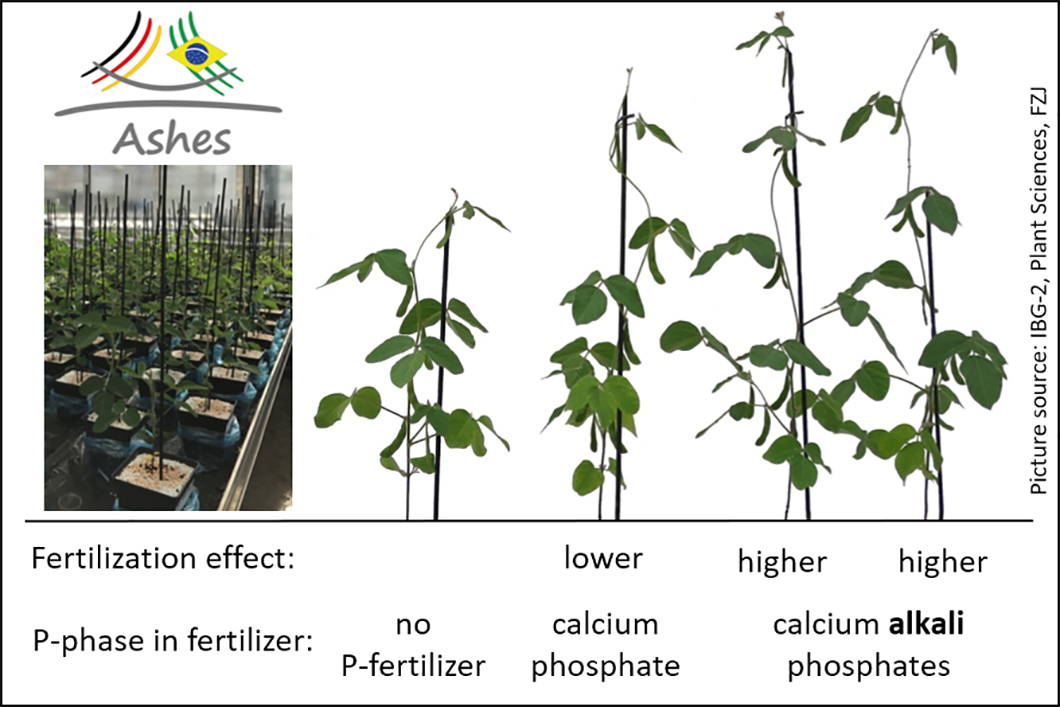
Soybean plants from plant growth experiments at Forschungszentrum Jülich fertilized with bagasse-based phosphorus(P)-fertilizers and P-phases in these fertilizers
Source: BAM
The biomass remaining after sugarcane juice extraction for sugar and ethanol production is the so-called bagasse. Bagasse is combusted for energy generation, resulting in about 10 million tons of bagasse ash every year, which is mainly landfilled . The ash contains plant nutrients phosphorus and potassium and could be used as fertilizer. However, the plant availability of phosphorus from bagasse ash is low, which limits the use of the ash as phosphorus fertilizer.
In the German-Brazilian BMBF-project “ASHES”, we produced nutrient-rich and plant available bagasse-based thermal products. In the first step, bagasse was thermally treated together with chicken manure to increase the phosphorus content. The second step included a thermochemical post-treatment with alkali additives to increase the fertilizing effect of phosphorus. Plant growth experiments conducted at Forschungszentrum Jülich with soybean plants in soils from Brazil confirmed the increasing fertilization effects of bagasse-based products, which allows to keep the phosphorus from bagasse in the nutrient cycle.
We showed that the positive fertilization effects of thermal products are related to the crystalline phases of the phosphorus compounds. The presence of calcium alkali phosphate Ca(Na,K)PO4 could be correlated with a higher fertilizing effect, whereas presence of phosphorus phases without alkali metals (sodium and potassium) led to a lower fertilizing effect. The positive fertilizing effects during plant growth tests were additionally confirmed by various chemical extraction methods and by the DGT technique (Diffusive Gradient in Thin-films).
Soybean Fertilized by P-Phases from Bagasse-Based Materials: P-Extraction Procedures, Diffusive Gradients in Thin Films (DGT), and X-ray Diffraction Analysis (XRD)
Hannes Herzel, V. Dombinov, Christian Vogel, S. Willbold, G. V. Levandowski, M. Meiller, F. Müller, J. W. Zang, W. A. da Fonseca-Zang, N. D. Jablonowski, S. D. Schrey, Christian Adam
published in Agronomy, Vol. 10, page 895, 2020


